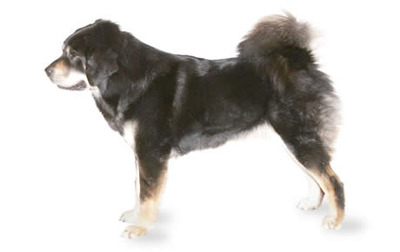| Trainability: | 2/10 |
| Shedding: | 9/10 |
| Energy Level: | 5/10 |
| Guard Dog: | 10/10 |
| Good With Children: | 10/10 |
| Popularity: | 2/10 |
Behavior
The Tibetan Mastiff is bold, brave, calm, cool and attentive breed of dog. It has a tendency to bark during the evening if left outside, but it will be calm inside. It is an extraordinary group of gatekeepers and is a savage against wolves, panthers or any predator that attempt anger it. It is not difficult to tame it. The Tibetan Mastiff needs a firm, and religiously good training to prevent it from being stubborn at times. These puppies have a deep longing to satisfy their managers. They are adored by the youngsters, but can be doubtful with strangers. It falls into place without any issues for this Mastiff to watch its family and their property. Tibetan Mastiffs wont listen when they sense that they are more strong minded than their managers. The goal in preparing this puppy is to attain pack guide status. When people live with puppies, they turn into their pack. The whole pack chips requires solitary pioneer. The puppy shows his disappointment with snarling and sometimes gnawing.
Appearance
The Tibetan Mastiff is an enormous, big canine with tough skeletal structure. The wrinkled head is wide, and the wide gag is square when seen from all sides. The nose is dark and the upper lip covers the level lip scissor like teeth. The marginally inclining eyes are in the shape of almond that is colored in shades of tan. The V-formed ears hang near the head and the breed has a muscular neck. The feathered tail is twisted over the back. The front straight legs are also featured. The feet are graceful and may have feathering between the toes. The twofold cover is massive and thick with overwhelming curls around the neck and shorter hair on the head. The layer shade comes in dark, tan and blue-ash, all with or without tan markings and different shades of gold. It can additionally have white markings.
Grooming
The Tibetan Mastiff needs brushing of their hair regularly. In the winter the cover has a richness of quite thick hair, which sheds once a year in the span of a month, when the climate gets hotter. Throughout this time the breed needs brushing regularly.
History
The Tibetan Mastiffs are the Tibetan puppies that were the offspring of a greater part of Molossers and Mastiffs. The mountainous puppies were utilized to watch property. Generally limited throughout the day and let untied around evening time, here and there a solitary puppy may watch a whole town. The dogs were regularly attached up as puppies to improve forceful inclinations. They were frequently left to monitor the families and tents when the men moved their groups to higher pasture. Queen Victoria’s interest in these puppies in the mid – 1800 sparked off an interest in many other people. The British composed up a standard and started to breed them. Tibetan Mastiffs were foreign made from India, Nepal, Ladakh and Afghanistan to the United States in the 1970s and were utilized as establishment stock for the breed. Now the breed is also rising in popularity in other parts of the world.

















